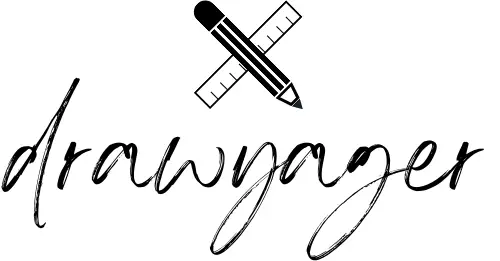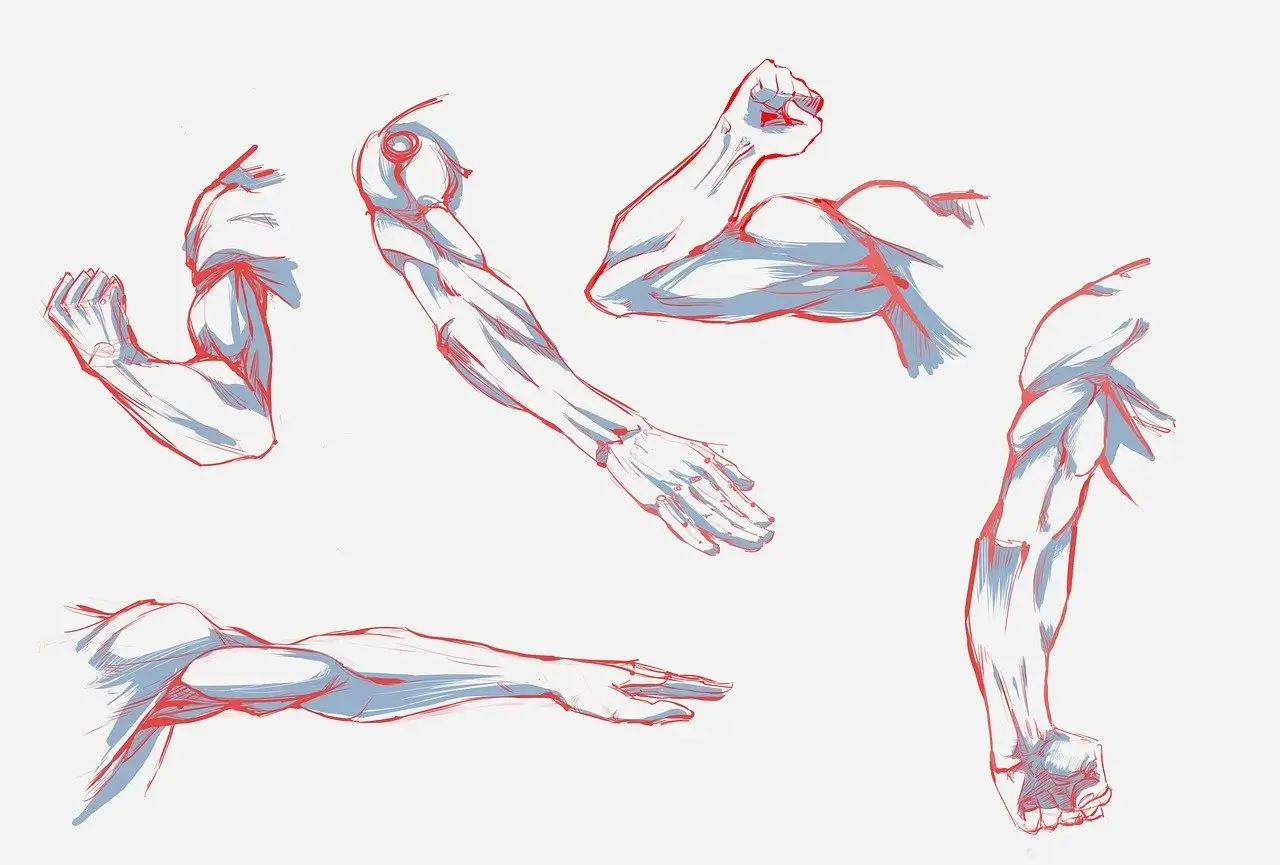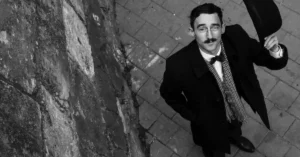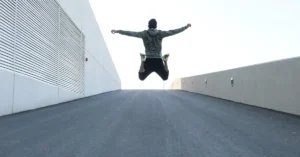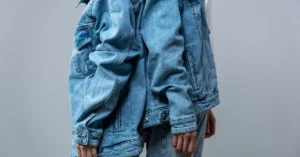Achieving the perfect muscle appearance can be compared to tackling a complex jigsaw for numerous artists, particularly in nailing every subtlety of the human anatomy. However, by accessing top-notch tutorials on drawing muscles, the task of capturing those faultless, lifelike human shapes turns remarkably straightforward. Drawing from personal experience, I recognise the significance of dependable resources when sketching musculature. Consequently, I have compiled some expert recommendations and resources to enhance your ability in drawing muscles.
One of the most important aspects of muscle drawing is understanding the anatomy of the human body. This includes knowledge of the various muscle groups, their functions, and how they interact with each other. By studying anatomy, you can gain a better understanding of how muscles work and how they affect the overall shape and movement of the body. There are many online resources that provide detailed information on human anatomy, such as Kenhub and Clip Studio, which offer muscle anatomy charts and diagrams that can be used as muscle drawing references.
Another useful resource for muscle drawing reference is 3D models of the human body. These models can be rotated and viewed from different angles, allowing you to see how muscles look from different perspectives. SetPose is an online tool that provides interactive 3D models of human figures and dynamic poses, which can be adjusted and customized to create realistic muscle drawings. Using these resources, you can improve your muscle drawing skills and create more accurate and lifelike depictions of the human form.
Understanding Anatomy
One of the first things to consider when studying anatomy is the skeletal system. The bones provide the framework for the muscles to attach to and move around. Knowing the location and shape of bones is essential for creating accurate muscle drawings. For example, the deltoid muscle attaches to the clavicle, scapula, and humerus bones, allowing it to move the arm in various directions.
Next, it’s important to understand the different types of muscles in the body. There are three main types: skeletal, smooth, and cardiac. Skeletal muscles are the ones we can control voluntarily and are responsible for movement. Smooth muscles are found in organs and blood vessels and are involuntary. Cardiac muscles are found in the heart and are also involuntary.
When drawing muscles, it’s essential to know their origin and insertion points, that’s why muscle drawing references are so important. The origin is where the muscle begins, and the insertion is where it attaches to a bone. Understanding these points helps you understand how the muscle moves and how it interacts with other muscles.
Finally, it’s helpful to study muscle groups and how they work together. For example, the quadriceps and hamstrings work together to move the leg. By understanding the function of muscle groups, you can create more accurate and dynamic muscle drawings.
Types of Muscles
When it comes to muscle drawing reference, it is important to understand the different types of muscles that make up the human body. There are three main types of muscles: smooth, cardiac, and skeletal.
- Smooth Muscles are involuntary muscles that are found in organs such as the stomach, intestines, and blood vessels. They are responsible for the movement of substances such as food and blood through the body. Smooth muscles are not under conscious control, which means that we cannot consciously control their movement.
- Cardiac Muscles are found in the heart and are responsible for pumping blood throughout the body. Like smooth muscles, cardiac muscles are involuntary and cannot be consciously controlled.
- Skeletal Muscles are the muscles that we can see and feel, and are responsible for movement and posture. They are attached to bones by tendons and are under conscious control. Skeletal muscles are further divided into two types: slow-twitch (Type I) and fast-twitch (Type II) muscles.
Slow-twitch muscles are used for endurance activities such as long-distance running, while fast-twitch muscles are used for explosive activities such as sprinting and weightlifting. Understanding the different types of skeletal muscles can help you create more accurate and dynamic poses when drawing figures.
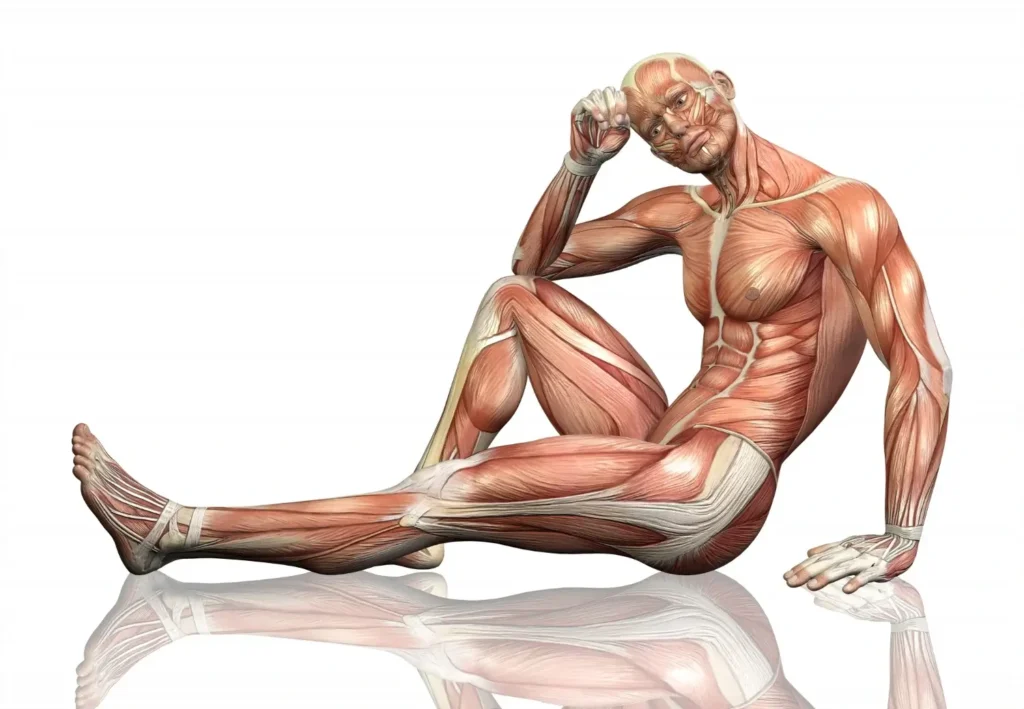
Muscle Drawing Techniques
With the right techniques, drawing muscles can be a rewarding experience. In this section, I will discuss some of the techniques that I have found helpful in my own muscle drawing reference.
- Sketching is an essential part of muscle drawing. It helps to lay down the foundation of the drawing and allows you to get a sense of the overall composition. When sketching, it’s important to keep the proportions of the muscles in mind. A good way to do this is to break down the muscles into basic shapes like circles, squares, and triangles. This will help you to create a more accurate and realistic representation of the muscles.
- Shading is another crucial aspect of muscle drawing. It helps to give the muscles depth and dimensionality. When shading, it’s important to keep the light source in mind. This will help you to create shadows and highlights that make the muscles look more three-dimensional. A good way to practice shading is to use a reference image and try to replicate the shadows and highlights that you see.
- Detailing is the final step in muscle drawing. It helps to add texture and definition to the muscles. When detailing, it’s important to pay attention to the smaller details like veins and tendons. These details can make a big difference in the overall appearance of the muscles. A good way to practice detailing is to use a reference image and try to replicate the smaller details that you see.
In conclusion, muscle drawing reference can be a challenging task, but with the right techniques, it can be a rewarding experience. Sketching, shading, and detailing are all important aspects of muscle drawing that can help you create more accurate and realistic representations of muscles. By practicing these techniques, you can improve your muscle drawing skills and create artwork that truly captures the beauty and complexity of the human form.
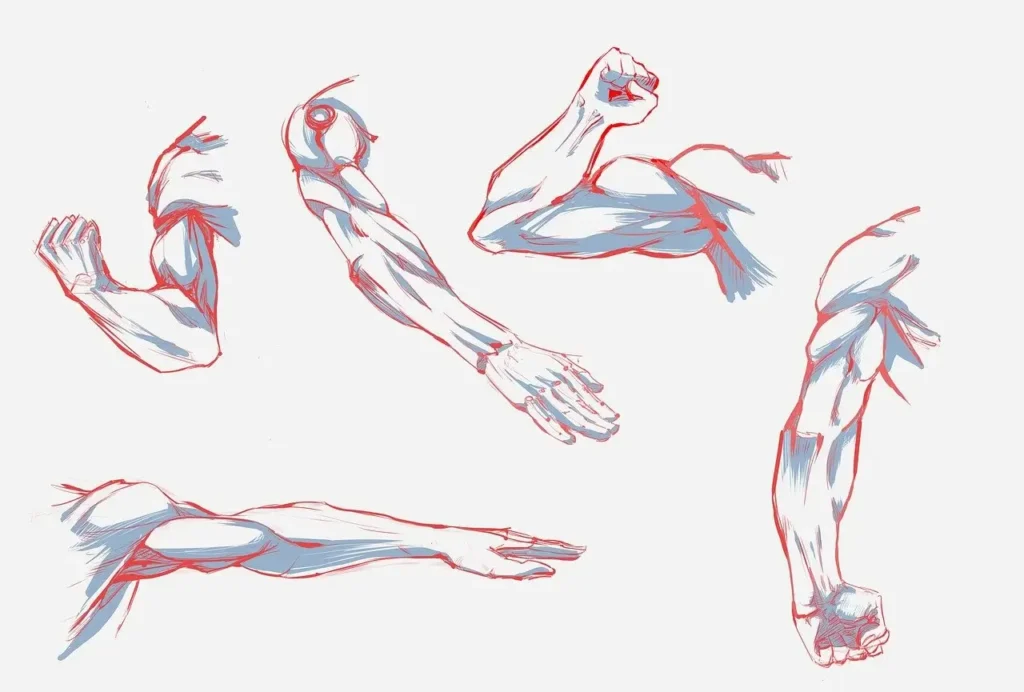
Muscle Groups
Understanding the different muscle groups is crucial for creating accurate and dynamic figures. Each muscle group affects the way a drawing looks and feels.
Leg Muscles
The leg muscles are some of the largest and most powerful muscles in the body. They are responsible for movement and support of the lower body. The quadriceps, hamstrings, and calves are the main muscle groups in the leg. Each of these muscle groups affects the way a drawing looks and feels. Draw them differently a few times and find out, how it affects your drawing!

Arm Muscles
The arm muscles are responsible for movement and support of the upper body. The biceps, triceps, and forearm muscles are the main muscle groups in the arm. Try drawing the different muscles bigger or smaller every time and see, how it changes the personality of your drawing.

Back Muscles
The back muscles are some of the largest and most powerful muscles in the body. They are responsible for the movement and support of the upper body. The latissimus dorsi, trapezius, and erector spinae are the main muscle groups in the back. You can draw the back muscles slim or like a turtle shell from a stronglifter – try it out. It can change the whole mood in the picture.
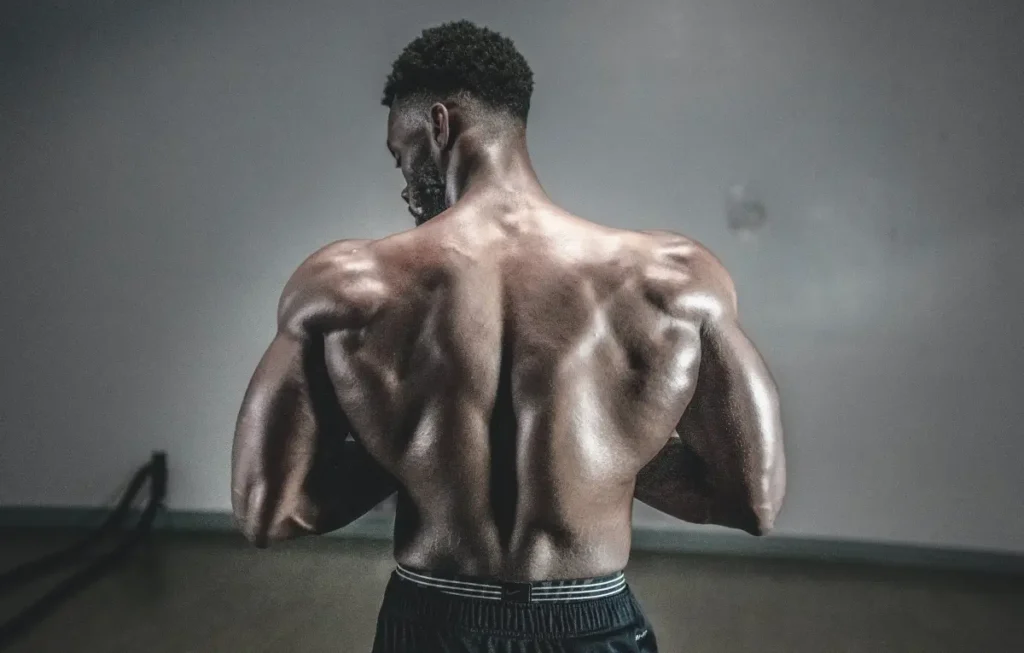
Chest Muscles
The chest muscles are responsible for movement and support of the upper body. The pectoralis major and minor are the main muscle groups in the chest. Each of these muscle groups affects the way a drawing looks and feels – not only for drawing of men, but also for drawing of women. They can change the silhouette the way you want it.

Abdominal Muscles
The abdominal muscles are responsible for movement and support of the core. The rectus abdominis, obliques, and transverse abdominis are the main muscle groups in the abdomen.
Shoulder Muscles
The shoulder muscles are responsible for movement and support of the upper body. The deltoids and rotator cuff muscles are the main muscle groups in the shoulder. Understanding the shoulder muscles is crucial for creating accurate and dynamic figures. Each of these muscle groups affects the way a drawing looks and feels.
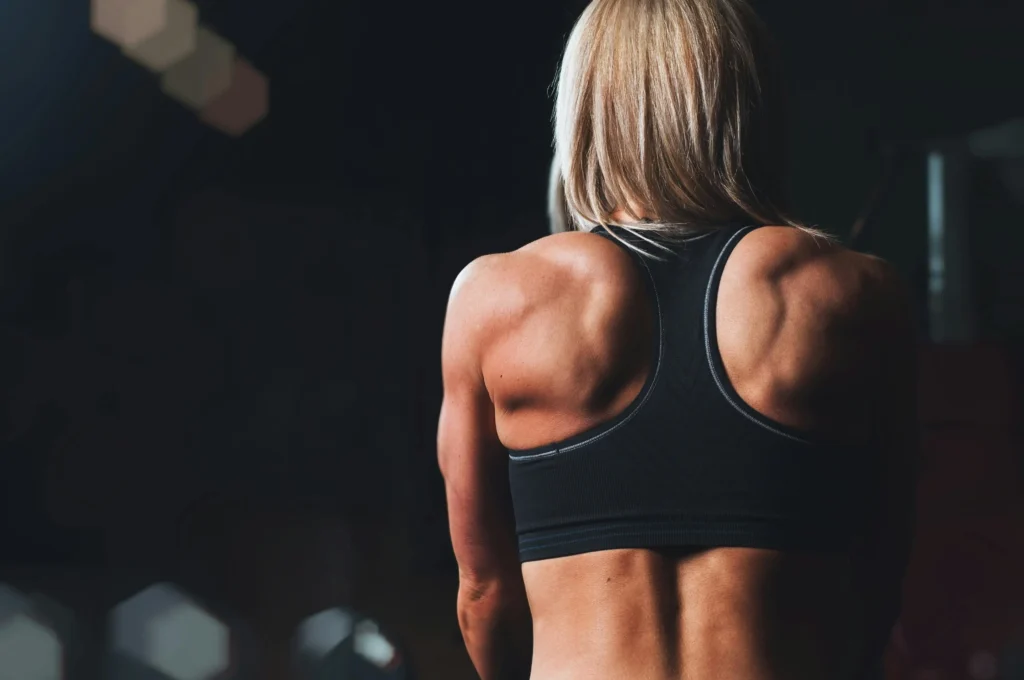
In conclusion, understanding the different muscle groups and knowing, where to look after them in muscle drawing references is crucial for creating accurate and dynamic figures. By studying the muscle groups and how they affect a drawing, you can create more realistic and engaging artwork.
Common Mistakes and How to Avoid Them
When it comes to muscle drawing references, there are some common mistakes that artists make. These mistakes can prevent you from creating accurate and realistic muscle drawings.
Mistake #1: Not Understanding Muscle Anatomy
One of the biggest mistakes that artists make when drawing muscles is not understanding muscle anatomy. Without a basic understanding of muscle anatomy, it’s impossible to create accurate and realistic muscle drawings. Therefore, it’s important to study muscle anatomy and learn about the different muscle groups, their functions, and how they connect to each other. If you can’t find enough muscle drawing references online, maybe check out your local library to find a book about anatomy.
Mistake #2: Overemphasizing Muscles
Another common mistake that artists make when drawing muscles is overemphasizing them. While muscles are an important part of the human body, they’re not the only thing that makes a person look strong or athletic. Overemphasizing muscles can make a drawing look unrealistic and can detract from other important features, such as posture and body fat. You can study muscle drawing references to get a feeling of how muscles affect drawings.
Mistake #3: Not Paying Attention to Lighting
Lighting is an important aspect of muscle drawing reference. Without proper lighting, it’s difficult to create realistic muscle drawings. When drawing muscles, it’s important to pay attention to the direction and intensity of the light source. This will help you create shadows and highlights that will make your drawings look more realistic.
Mistake #4: Ignoring Muscle Insertions and Origins
Muscle insertions and origins are important aspects of muscle anatomy. They determine how a muscle moves and functions. When drawing muscles, it’s important to pay attention to these insertions and origins. This will help you create accurate and realistic muscle drawings that accurately depict how the muscle moves and functions. Again, if you’re not sure how muscles are drawn anatomically correctly, refer to muscle drawing references!
Where To Get Useful Muscle Drawing References
Here are some of the most useful tools that I use when creating muscle drawings.
Anatomy Charts
Anatomy charts are an excellent resource for artists who want to understand the harmony of body parts. They provide a detailed view of the human body, including the muscles, bones, and organs. These charts can help artists understand the structure of the body and how the muscles work together to create movement and are a perfect muscle drawing reference.
Online Resources
There are many online resources available for artists who want to improve their muscle drawing reference skills. Websites like Art Reference Point and Body Kun Dolls offer a wide range of tutorials and resources for artists of all skill levels. These resources can help you learn new techniques and improve your muscle drawing skills.
In conclusion, having the right tools is essential when it comes to muscle drawing reference. Whether you’re using offline anatomy charts or online resources, make sure you choose tools that are high-quality and reliable. With the right tools and a little practice, you can create realistic and accurate muscle drawings that will impress your audience.
FAQ
How do I improve my understanding of muscle anatomy?
To improve your understanding of muscle anatomy, I suggest studying the human body’s skeletal structure. Mastering the skeleton will help you get the figure drawing right every time. Once you have a good grasp of the skeleton, you can start adding muscle and fat to your figures.
How do I add depth and shading to my muscle drawings?
Adding depth and shading to muscle drawings can be challenging, but it’s essential to create a realistic and dynamic figure. To add depth and shading, I recommend using hatching and cross-hatching techniques. These techniques create the illusion of depth and shadow by using a series of lines to create texture and contrast.
How can I make my muscle drawings more dynamic?
To make your muscle drawings more dynamic, I suggest studying the different muscle groups and how they interact with each other. Understanding the structure and movement of muscles will help you create more accurate and dynamic poses when drawing figures.
Also, you can use different shading and detailing techniques to create various lighting conditions.
Can I use reference images for muscle drawing?
Yes, using muscle drawing reference images can be helpful when drawing muscles. However, it’s important to use them as a guide and not copy them directly. Use reference images as a starting point and then add your own style and interpretation to create a unique muscle drawing.
If you liked this blog post about the topic “Muscle Drawing Reference”, don’t forget to leave a comment down below to tell me about your experience with it.
Do you want more inspiration or need some drawing references? Maybe, how to draw a hand, or do you have problems drawing sitting people?
